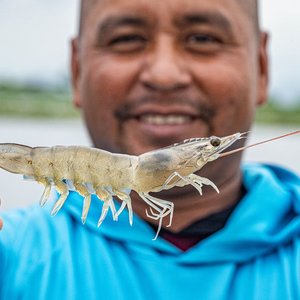Introduction
Remote setting is a technique for producing oyster seed from larvae. It consists of two phases: (1) setting, in which larvae attach to "cultch," a setting material such as shell; and (2) a nursery period where newly set oysters (called seed) are placed in protected areas until they are ready for planting. Oyster growers often use remote setting when natural seed supplies are not consistently available or must be purchased. By using your own cultch, labor and equipment, you can reduce the cost of seed, a major factor in oyster farming; with practice and planning, you can produce a consistent supply to meet your own needs.
Adult oysters are spawned at a hatchery where they produce millions of tiny larvae. These free swimming larvae are reared for approximately two weeks or until they develop a structure commonly referred to as an "eye-spot." It is at this time that the "eyed larvae" are ready to attach to a surface and undergo metamorphosis into juvenile oysters. In remote setting, hatcheries ship eyed larvae to oyster growers for setting at their sites. Shipping a small package containing millions of larvae is significantly less expensive than moving seed already attached to heavy cultch.
Oyster shells are the most common cultch, but growers use other materials as well. While the remote setting process normally is used to produce seed for bottom culture, you can also produce seed for other growing methods. Setting systems can often be adapted to using different types of suitable cultch.
Growers usually set oysters during the warm summer months, though heaters in the tank can be used to begin earlier. In the setting phase, containers filled with cultch are placed in a tank of salt water that is equipped with aeration. Cultch is often soaked for 24 hours before the larvae are added. In two to three days, the larvae attach to the cultch in a permanent bond. Growers maintain these new seed, also called spat, in the tank for a few days, and then transfer them to a nursery area. Producing large amounts of seed for bottom planting is simplified when machinery is used to handle the cultch.
In the nursery phase, containers of seed are placed in a protected area, usually shallow water. This practice will allow for easy retrieval when the oysters grow large enough for planting. Protecting tiny oysters against predation and siltation during the nursery period results in significantly better survival rates. While many types of containers can be used, they must permit widespread circulation of water, thus bringing food and oxygen to the growing oysters. Despite being crowded, spat will grow to planting size usually about 3/4 inch in a few summer months.
Author(s)
Richard E. Bohn, Donald W. Webster and Donald W. Meritt, Maryland SeaGrant Extension Program
Publication
Northeastern Regional Aquaculture Center (NRAC) Bulletin No. 220
Click link below to download PDF.







